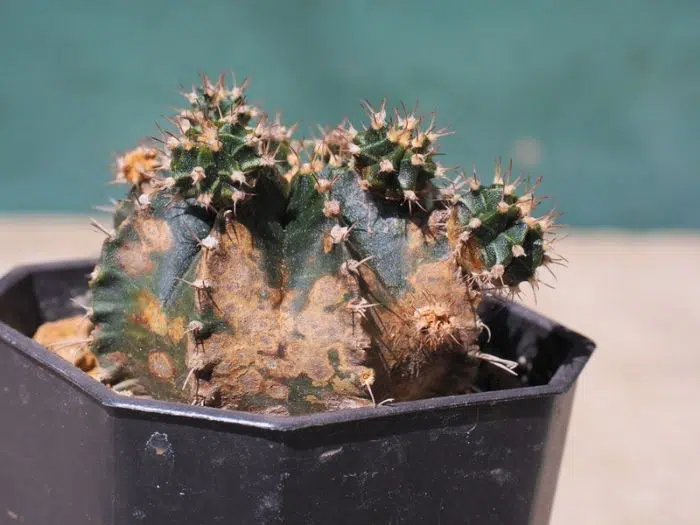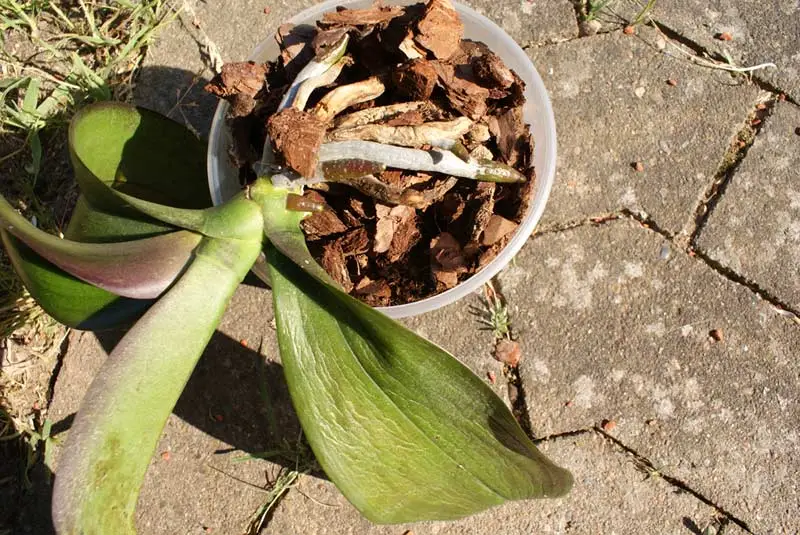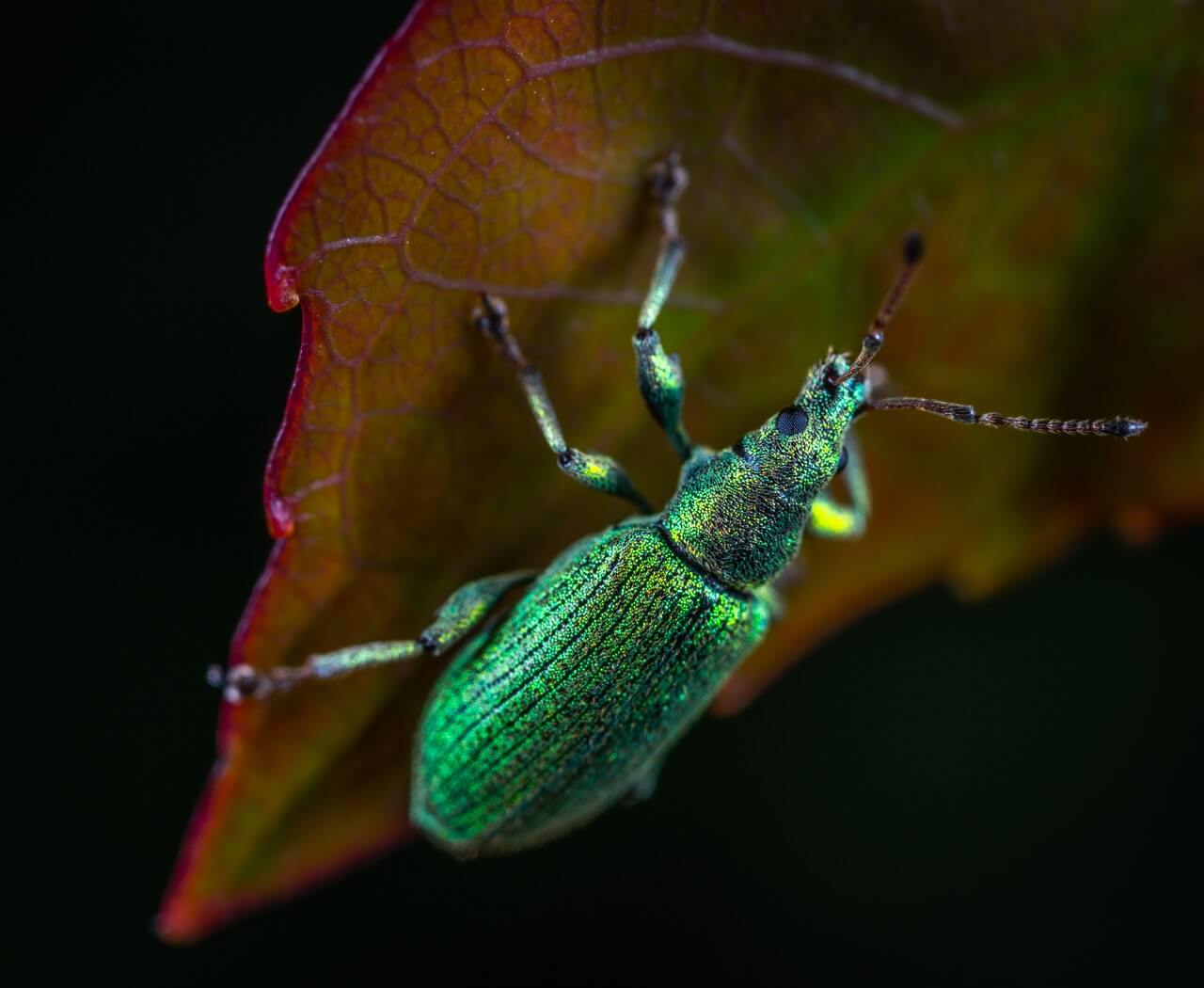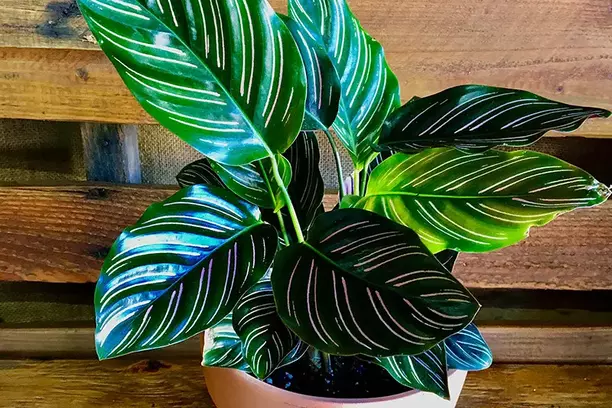Fiddle leaf figs are a popular houseplant due to their large, glossy leaves and ability to add a touch of tropical ambiance to any room. However, like any plant, fiddle leaf figs are susceptible to bacterial infections that can damage or even kill the plant if left untreated. Symptoms of a bacterial infection in a fiddle leaf fig can include brown or black spots on the leaves, yellowing or wilting leaves, and a sticky residue on the leaves or surrounding soil.
Treating a bacterial infection in a fiddle leaf fig requires a combination of removing infected leaves and treating the plant with an appropriate fungicide. It is important to act quickly at the first sign of infection to prevent it from spreading to other parts of the plant or to other plants in the same vicinity.
Treatment for Bacterial Infections
If a fiddle leaf fig tree has a bacterial infection, it is important to treat it as soon as possible to prevent the spread of the disease. There are several methods for treating bacterial infections in fiddle leaf fig trees, including using bactericides and neem oil, pruning damaged leaves, and repotting the plant.
Using Bactericides and Neem Oil
One of the most effective treatments for bacterial infections in fiddle leaf fig trees is to use bactericides and neem oil. Bactericides are chemicals that are specifically designed to kill bacteria, while neem oil is a natural oil that has antibacterial properties.
To use bactericides and neem oil, mix the bactericide according to the manufacturer’s instructions and apply it to the affected areas of the plant. Then, apply neem oil to the same areas to help prevent the spread of the infection. Repeat this process every few days until the infection clears up.
Pruning Damaged Leaves
Another effective treatment for bacterial infections in fiddle leaf fig trees is to prune damaged leaves. Bacterial infections often cause leaves to turn brown or yellow and become wilted or droopy. These leaves should be removed from the plant using a sharp, sterile pair of pruning shears.
When pruning, be sure to cut the leaf stem as close to the main stem as possible to prevent any bacteria from spreading to healthy parts of the plant. Dispose of the infected leaves in a sealed plastic bag to prevent the spread of bacteria.
Repotting the Plant
If a fiddle leaf fig tree has a severe bacterial infection, it may be necessary to repot the plant. This is because the bacteria may be living in the soil and infecting the roots of the plant. To repot the plant, carefully remove it from its current pot and gently shake off any excess soil.
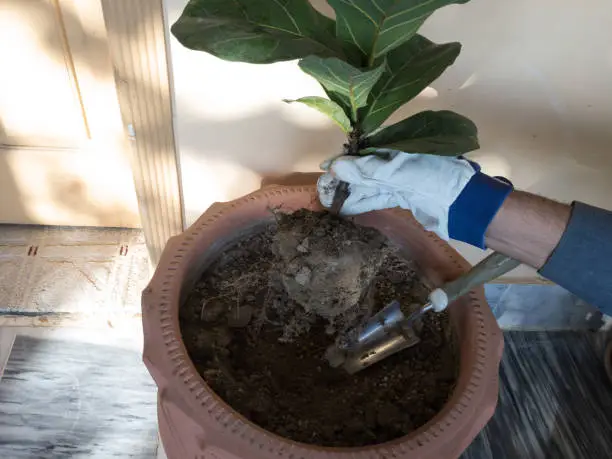
Inspect the roots for signs of infection, such as brown or black spots or a foul odor. If there are signs of infection, remove any infected roots using a sharp, sterile pair of scissors or pruning shears. Then, repot the plant in fresh, sterile soil and a clean pot.
In summary, treating bacterial infections in fiddle leaf fig trees requires a combination of methods, including using bactericides and neem oil, pruning damaged leaves, and repotting the plant if necessary. By taking these steps, it is possible to save a fiddle leaf fig tree from a potentially fatal bacterial infection.
Recognizing Bacterial Infection in Fiddle Leaf Figs
Fiddle leaf figs are popular indoor plants known for their large, glossy leaves. However, these plants are prone to bacterial infections that can cause brown spots and yellowing leaves. It is important to recognize the symptoms of bacterial infection in fiddle leaf figs to prevent the spread of the disease.
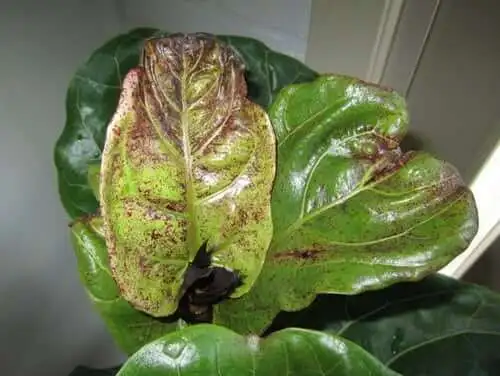
Identifying Symptoms
The symptoms of bacterial infection in fiddle leaf figs include brown spots on the leaves, yellowing leaves, and leaf drops. The spots may start small and spread rapidly, encompassing large portions of the leaf. The leaves may also curl or wilt, and the plant may appear stunted or weakened.
Differentiating Bacterial from Fungal Infections
Bacterial infections in fiddle leaf figs can be difficult to differentiate from fungal infections as the symptoms are similar. However, bacterial infections tend to progress more rapidly and can cause more severe damage to the plant. In addition, bacterial infections may produce a foul odor, while fungal infections may produce a white or gray powdery substance on the leaves.
Spotting Brown Spots and Yellowing Leaves
Brown spots and yellowing leaves are common symptoms of bacterial infection in fiddle leaf figs. The spots may start small and spread rapidly, encompassing large portions of the leaf. The leaves may also curl or wilt, and the plant may appear stunted or weakened. It is important to remove infected leaves and treat the plant with a bacterial or fungicidal spray to prevent the spread of the disease.
In summary, recognizing the symptoms of bacterial infection in fiddle leaf figs is crucial to preventing the spread of the disease. By identifying symptoms such as brown spots and yellowing leaves, differentiating bacterial from fungal infections, and spotting early signs of infection, plant owners can take steps to protect their fiddle leaf figs and keep them healthy.
Understanding Causes of Bacterial Infections
Bacterial infections are a common problem for fiddle leaf fig plants. Understanding the causes of these infections is essential to prevent them from occurring and to treat them effectively.
Role of Overwatering
Overwatering is one of the most common causes of bacterial infections in fiddle leaf fig plants. When the soil is constantly wet, it creates the perfect environment for bacteria to thrive. The excess moisture also weakens the plant’s root system, making it more susceptible to infection.
To prevent overwatering, it is important to water the plant only when the top inch of soil is dry. It is also important to use a well-draining soil mix and a pot with drainage holes to allow excess water to escape.
Importance of Proper Drainage
Proper drainage is essential to prevent bacterial infections in fiddle leaf fig plants. When the soil does not drain properly, excess water accumulates in the pot, creating a breeding ground for bacteria. This can lead to root rot and other bacterial infections.
To ensure proper drainage, it is important to use a pot with drainage holes and a well-draining soil mix. It is also important to avoid placing the plant in a saucer filled with water, as this can lead to excess moisture in the soil.
Impact of Inadequate Sunlight
Inadequate sunlight can also contribute to bacterial infections in fiddle leaf fig plants. When the plant does not receive enough sunlight, it becomes weak and more susceptible to infection.
Fiddle leaf fig plants require bright, indirect sunlight to thrive. It is important to place them in a location with adequate sunlight, such as near a south-facing window. If the plant is not receiving enough sunlight, it may be necessary to supplement it with artificial light.
By understanding the causes of bacterial infections in fiddle leaf fig plants, it is possible to prevent them from occurring and to treat them effectively. Proper watering, drainage, and sunlight are key to keeping these plants healthy and disease-free.
Preventing Bacterial Infections
Fiddle leaf figs are susceptible to bacterial infections, which can cause leaves to turn brown, wilt, and fall off. However, there are several steps that can be taken to prevent bacterial infections and keep your fiddle leaf fig healthy.
Proper Watering Practices
Overwatering is the most common cause of bacterial infections in fiddle leaf figs. It is important to water your plant correctly to prevent water from sitting in the soil for too long. Proper watering practices include:
- Water your plant only when the top inch of soil is dry to the touch.
- Use a well-draining soil mix to prevent water from pooling in the soil.
- Water your plant thoroughly, but avoid letting it sit in standing water.
Maintaining Air Circulation
Good air circulation is important for preventing bacterial infections in fiddle leaf figs. Stagnant air can create a breeding ground for bacteria, which can lead to infection. To maintain good air circulation:
- Place your plant in a well-ventilated area.
- Avoid crowding your plant with other plants or objects.
- Consider using a fan to circulate air around your plant.
Ensuring Plant Hygiene
Proper plant hygiene is essential for preventing bacterial infections in fiddle leaf figs. Bacteria can easily spread from plant to plant, so it is important to keep your plant clean and healthy. To ensure plant hygiene:
- Keep your plant free of dust and debris.
- Remove any dead or damaged leaves promptly.
- Avoid touching your plant with dirty hands or tools.
By following these simple steps, you can prevent bacterial infections in your fiddle leaf fig and keep it healthy and thriving.
Caring for Fiddle Leaf Figs Post Treatment
After successfully treating a bacterial infection in a fiddle leaf fig, it’s important to continue caring for the plant to prevent future infections and ensure its overall health. Here are some tips for caring for fiddle leaf figs post-treatment:
Monitoring New Leaves
Regularly monitor new leaves for signs of infection, such as brown spots or discoloration. If any signs of infection appear, immediately remove the affected leaves and treat the plant with a fungicide or bactericide.
Maintaining Proper Soil Conditions
Fiddle leaf figs prefer well-draining soil that is rich in nutrients. Use a high-quality potting soil or potting mix and make sure that the soil is moist but not waterlogged. Avoid overwatering the plant, as this can lead to root rot and other issues.
Implementing Regular Maintenance Practices
Regular maintenance practices can help keep fiddle leaf figs healthy and prevent future infections. Here are some maintenance practices to consider:
- Dust the leaves regularly to keep them clean and free of debris.
- Rotate the plant every few weeks to ensure that all sides receive adequate sunlight.
- Fertilize the plant every 2-3 months with a balanced fertilizer.
- Prune the plant as needed to remove dead or damaged leaves and promote new growth.
By following these tips, fiddle leaf fig owners can help ensure that their plants remain healthy and free of infections.
Frequently Asked Questions
What causes bacterial infection in Fiddle Leaf Fig?
Bacterial infection in Fiddle Leaf Fig is caused by the presence of harmful bacteria in the soil. Overwatering, poor drainage, and using contaminated soil or pots can contribute to the growth of these bacteria.
How do you know if your Fiddle Leaf Fig has a bacterial infection?
Signs of bacterial infection in Fiddle Leaf Fig include yellowing or browning of leaves, wilting, and a foul odor. The leaves may also have black or brown spots. It is important to act quickly to prevent the infection from spreading to other plants.
How do you treat bacterial root rot in Fiddle Leaf Fig?
To treat bacterial root rot in Fiddle Leaf Fig, remove the plant from the soil and wash the roots with a solution of water and hydrogen peroxide. Trim off any dead or rotting roots, and repot the plant in fresh soil with good drainage. Avoid overwatering and keep the plant in a well-ventilated area.
Is hydrogen peroxide safe for Fiddle Leaf Fig?
Hydrogen peroxide is safe for Fiddle Leaf Fig when used in the correct concentration. A solution of one part hydrogen peroxide to four parts water can be used to treat bacterial root rot in Fiddle Leaf Fig. However, it is important to avoid getting the solution on the leaves, as it can cause damage.
What is the best fungicide for treating Fiddle Leaf Fig?
Copper-based fungicides are effective for treating fungal infections in Fiddle Leaf Fig. However, it is important to follow the instructions carefully and avoid using too much, as this can damage the plant.
How to treat brown spots on Fiddle Leaf Fig?
Brown spots on Fiddle Leaf Fig can be caused by a variety of factors, including overwatering, underwatering, and pests. To treat brown spots, identify the underlying cause and take steps to address it. This may include adjusting watering habits, treating pests, or repotting the plant in fresh soil.
References
- Baker, J. R., & Palmateer, A. J. (2022). Ornamental Ficus Diseases: Identification and Control in Commercial Greenhouse and Interior-scape Production. (Publication No. PP308). University of Florida Institute of Food and Agricultural Sciences Extension. Retrieved from https://edis.ifas.ufl.edu/publication/PP308?downloadOpen=true
- Clemson Cooperative Extension. (2023). Houseplant Diseases & Disorders. Retrieved from https://hgic.clemson.edu/factsheet/houseplant-diseases-disorders/
Hand-picked related articles
- How to Get Rid of Spider Mites on Fiddle Leaf Fig
- Best Soil for Fiddle Leaf Figs
- Fiddle Leaf Fig Leaves Drooping: Causes + How to Revive It
- Fiddle Leaf Fig Yellow Leaves: Causes and Fixes
- Fiddle Leaf Fig Root Rot: Causes, Signs, and Fixes
- Red Spots on Fiddle Leaf Fig (Edema)
- How to Get Rid of White Spots on Fiddle Leaf Fig
